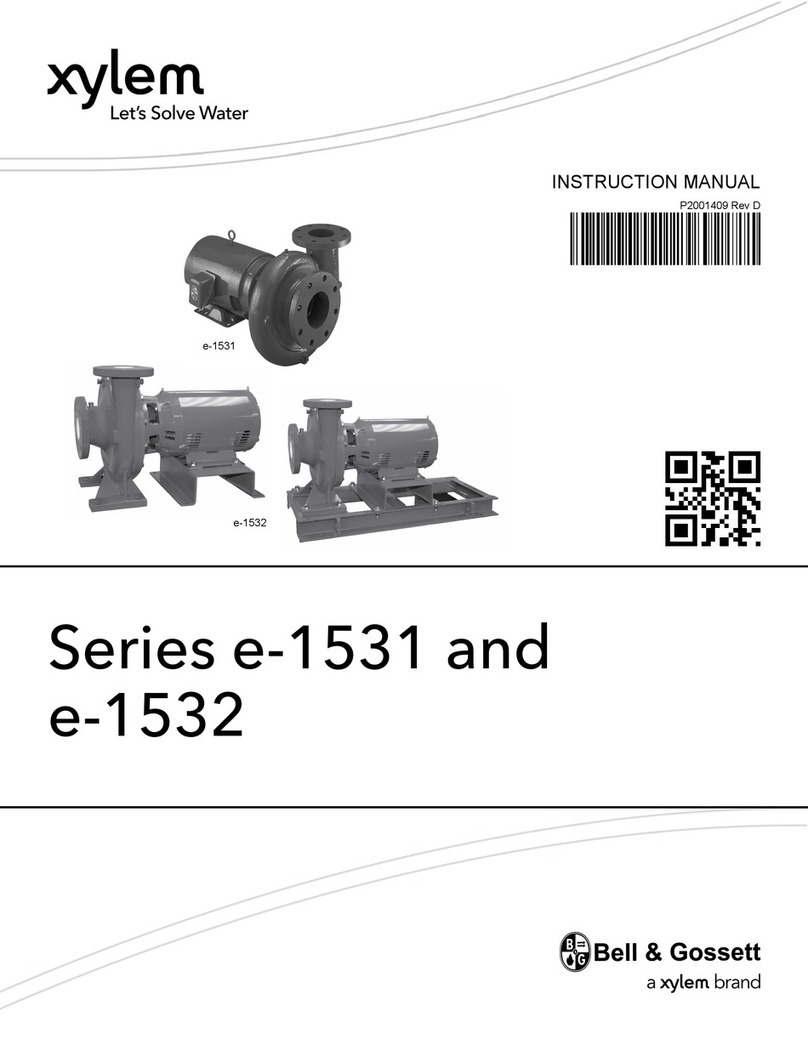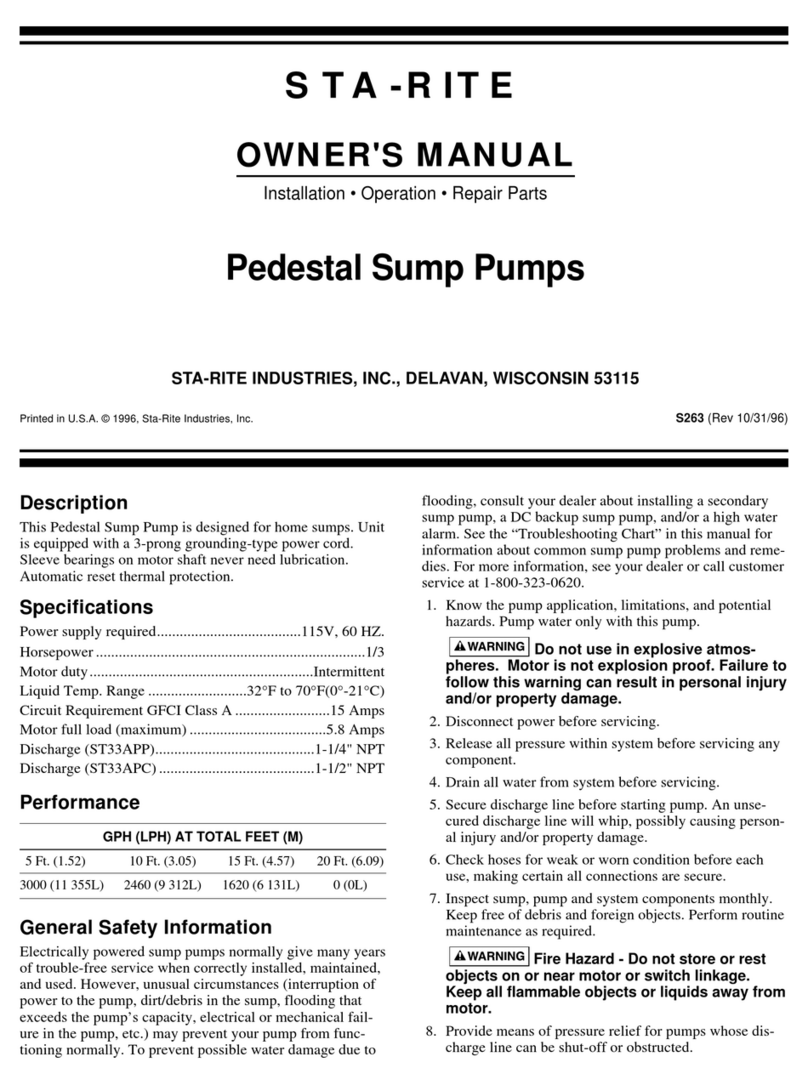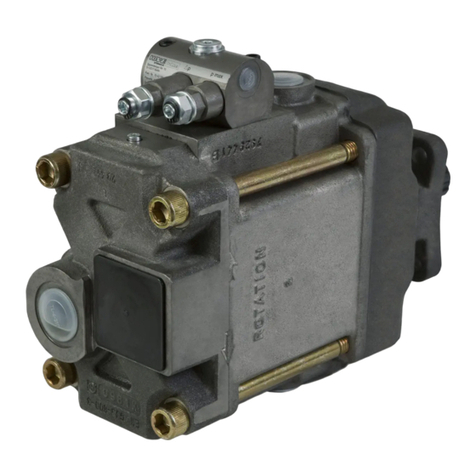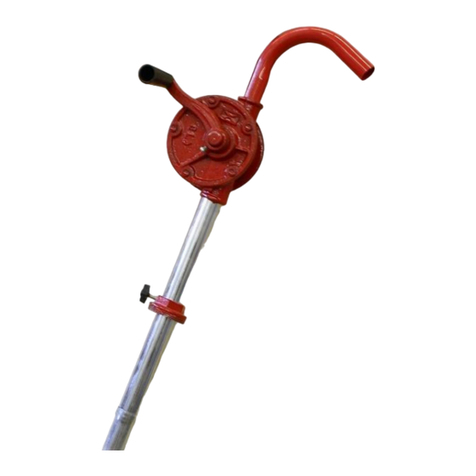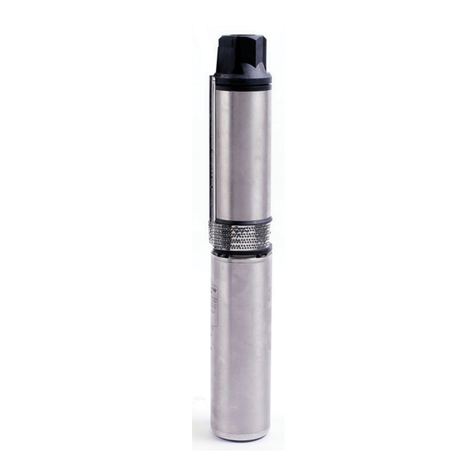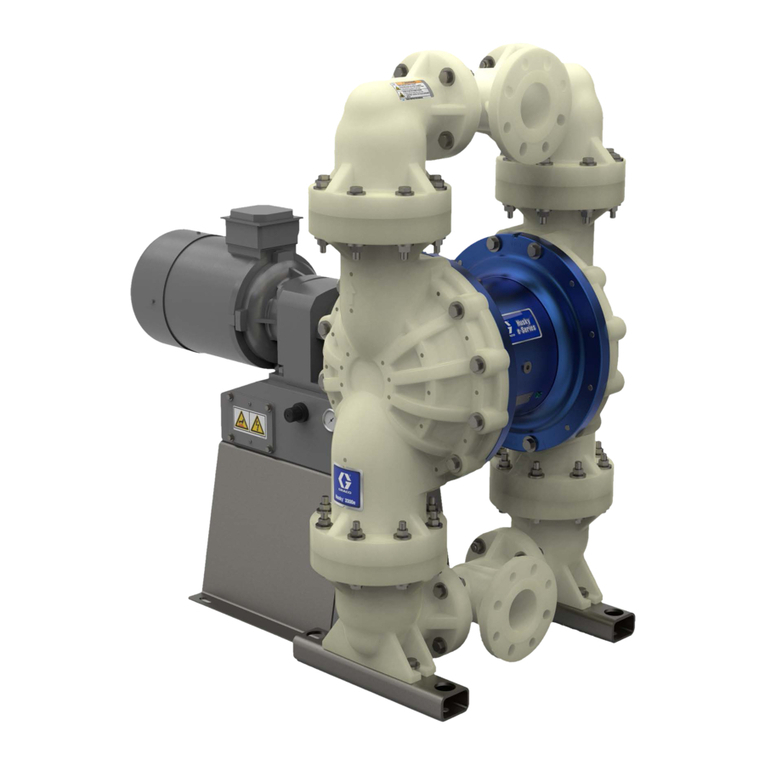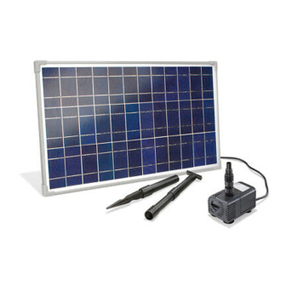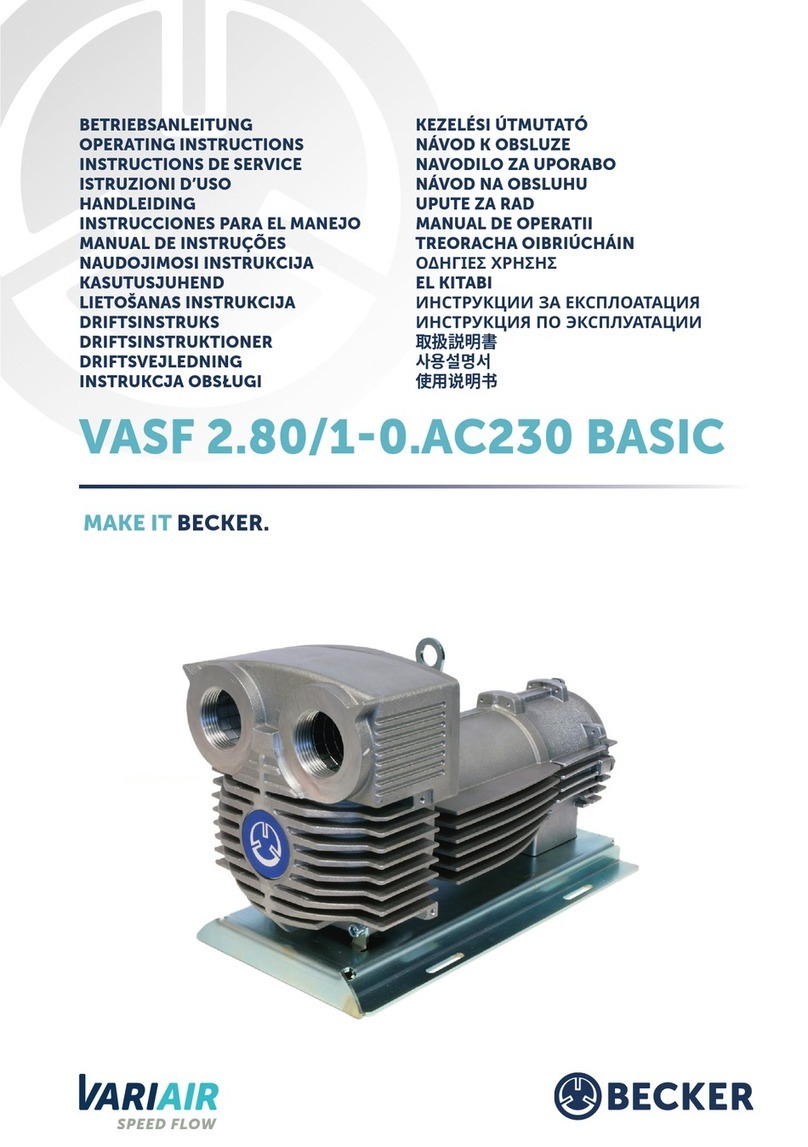
SER 339610-1 Low-Pressure Transfer Pump
Revision (8-06) 8
21. Install the Cylinder over the Body’s O-Ring and seat it
properly onto the Bottom Cap.
22. Install the Top Cap onto the Cylinder.
• Use care passing the O-Ring.
23. Install Keeper (11) into the groove of the Body.
• Make sure the hole aligns with Carriage Bolt (1c).
24. Install one Carriage Bolt through the Air Motor and
through the Keeper.
25. Install Flange Nut (1d).
• Do not tighten the Flange Nut at this time.
26. Repeat procedural steps 23 - 25 for the additional
Keepers and Carriage Bolts.
CAUTION
Do not overtighten Flange Nuts (1d). Component
damage can occur.
27. Torque each Flange Nut in an alternate pattern from 60
to 70 inch-pounds (6.8 - 7.9 Nm).
28. Install Screw (1b) into the Top Cap.
• Tighten the Screw to 50 inch-pounds (5.6 Nm).
29. "Snap" Cover (1a) onto the Cylinder.
30. Screw Shut-Off Valve (2) [with thread sealant] into the
Air Motor Assembly.
• Tighten the Shut-Off Valve securely in the position
required.
Operation
WARNING
Do not exceed the lowest pressure rating
of any component in the system.
Never point a control valve at any portion of your
body or another person. Lubricant discharged at
high velocity can penetrate the skin and cause
severe injury. Should any fluid appear to puncture
the skin, get medical care immediately.
Ensure all components are in operable condition.
Replace any suspect parts prior to operation.
Personal injury can occur.
1. Make sure air pressure at the regulator reads zero.
2. Slowly supply air pressure [recommended minimum of
25 psi (1.7 Bars)] to the pump’s motor.
• The pump assembly should cycle.
If the pump assembly does not cycle, refer to the
Troubleshooting Chart for details.
With air pressure at zero:
3. Connect a product hose to the pump’s material outlet.
• Direct the hose into an appropriate container.
4. Place the pump in the product to be dispensed.
5. Slowly supply air pressure to the pump’s motor.
6. Allow the pump to cycle slowly until the system and
product is free of air.
If the pump assembly does not prime, refer to the
Troubleshooting Chart for details.
WARNING
Should leakage occur anywhere within the
system, disconnect air to the motor. Personal
injury can occur.
With air pressure at zero:
7. Attach a control valve to the outlet hose of the pump.
8. Slowly supply 35 psi (2.4 Bars] air pressure to the
pump’s motor.
9. Operate the control valve into a container.
10. Allow the pump to cycle until the system and product
is once again free of air.
11. Shut off the control valve.
12. Set the air pressure to 100 psi (6.9 Bar).
13. Visually inspect the pump for external leaks.
• The pump should not cycle.
If the pump does not stall, refer to the
Troubleshooting Chart for details.
14. Check the motor for air leakage.
If the motor leaks, refer to the Troubleshooting Chart
in the Air Motor Service Guide for details.



